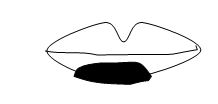Lip:
1.
Discuss the anatomy of the lip (muscles, blood supply, nerve supply).
2.
Describe the aesthetic units of the lip.
Reference(s):
Raphael, P., Harris, R., & Harris, S. W. (2013). Analysis and classification of the upper lip aesthetic unit. Plastic and Reconstructive Surgery, 132(3), 543–551.
3.
Draw us a picture of the lip and identify the philtral columns, philtral dimple, cupid’s bow, white roll, tubercle, commisure, and vermillion.
4.
What are the options for vermillion reconstruction?
5.
Full thickness BCCA-describe 3 options to reconstruct.
6.
SCCA-describe 3 options to reconstruct.
7.
A child chews on an electrical cord and is burned. What should you do? Now? Age 15?
8.
Lip reconstruction and free flaps.
Reference(s):
Daya, M., & Nair, V. (2009). Free radial forearm flap lip reconstruction: a clinical series and case reports of technical refinements. Annals of Plastic Surgery, 62(4), 361–367.
9.
Describe the steps of reconstructing a lower lip defect involving the commisure and 2/3 of the lip.
Cheek:
11.
Does the cheek have subunits?
Reference(s):
Chinnadurai, S., Janus, J. R., & Moore, E. J. (2011). Algorithm for the repair of cheek defects. The Laryngoscope, 121(1), 137–141.
12.
SCCA cheek-describe 3 options for reconstruction.
13.
Describe the reverse cervicofacial flap.
14.
When would you consider a free flap in cheek reconstruction?
Scalp:
15.
Scalp reconstruction is confusing: give us an algorithm to assist with management and decision-making.
Reference(s):
Desai, S. C., Sand, J. P., Sharon, J. D., Branham, G., & Nussenbaum, B. (2015). Scalp reconstruction: an algorithmic approach and systematic review. JAMA Facial Plastic Surgery, 17(1), 56–66.





